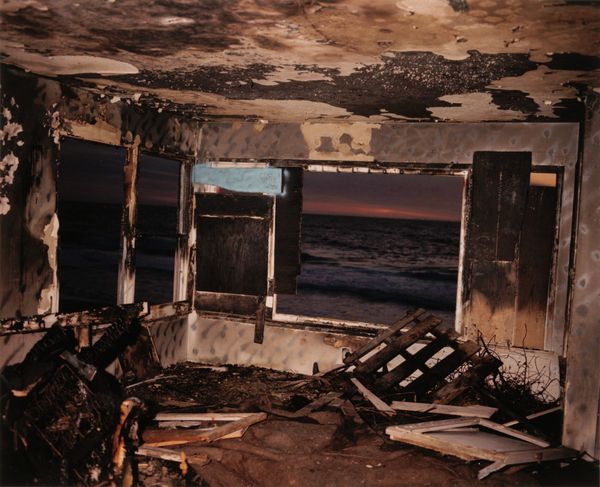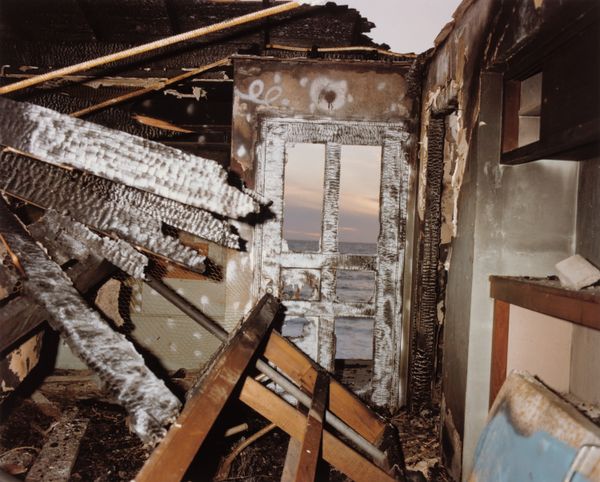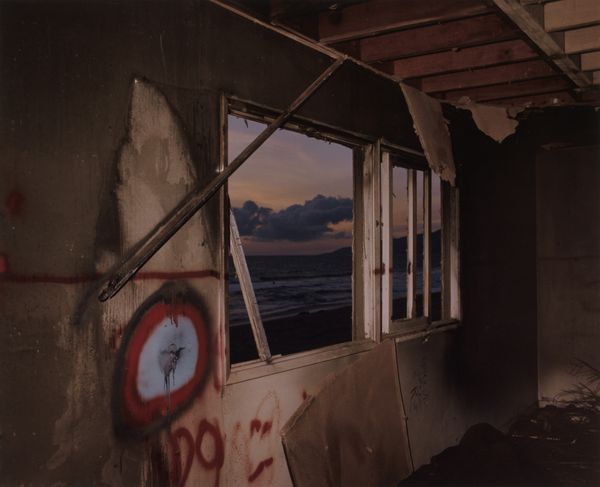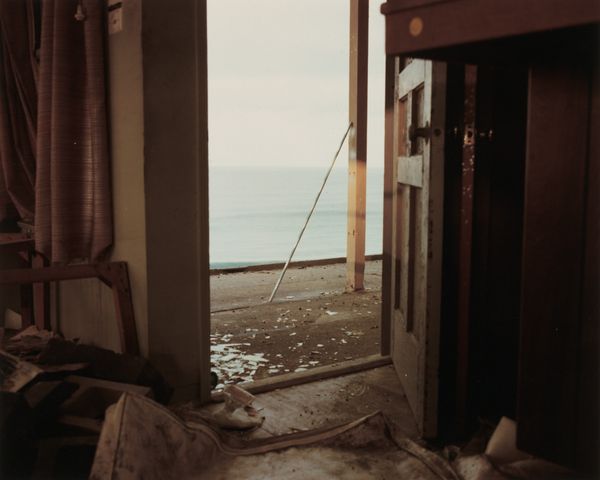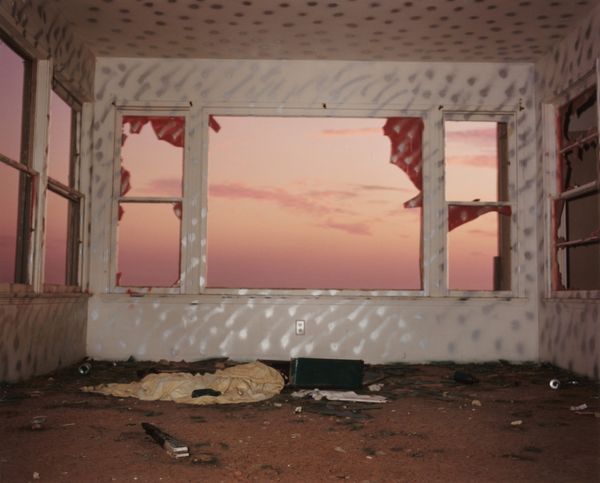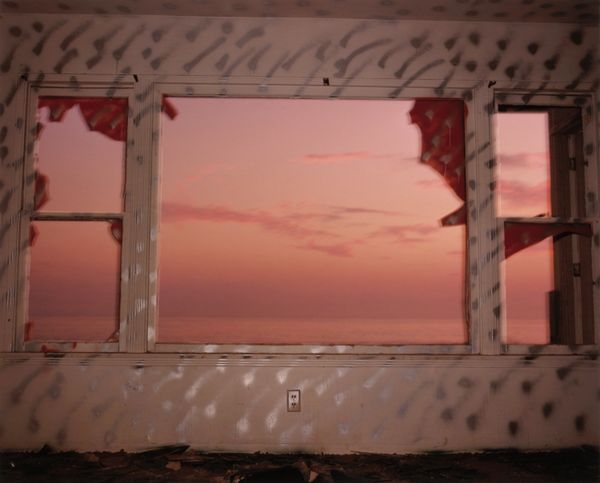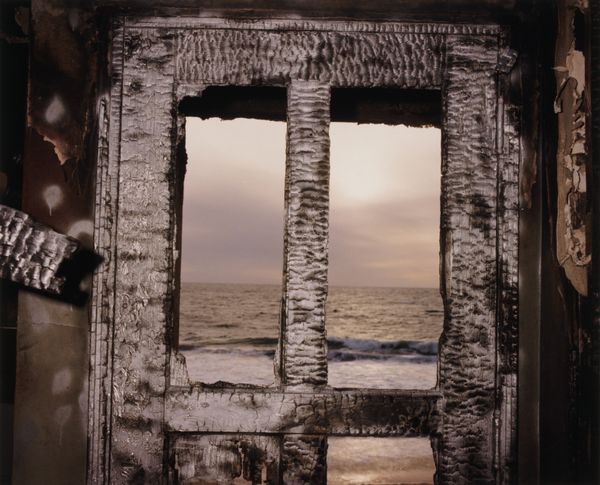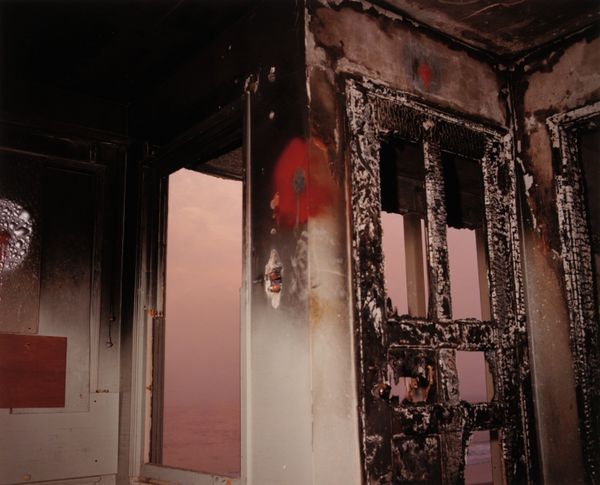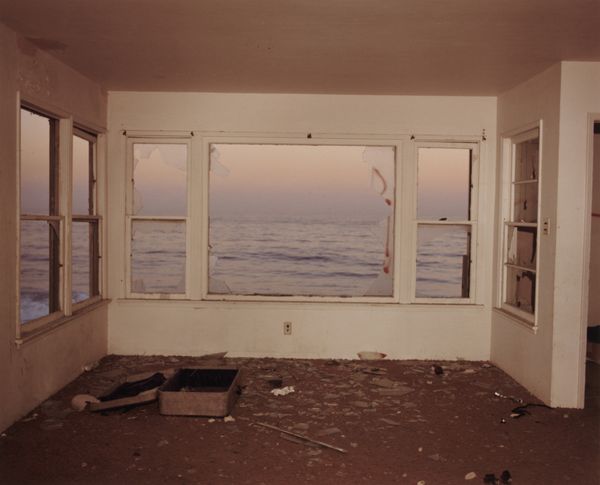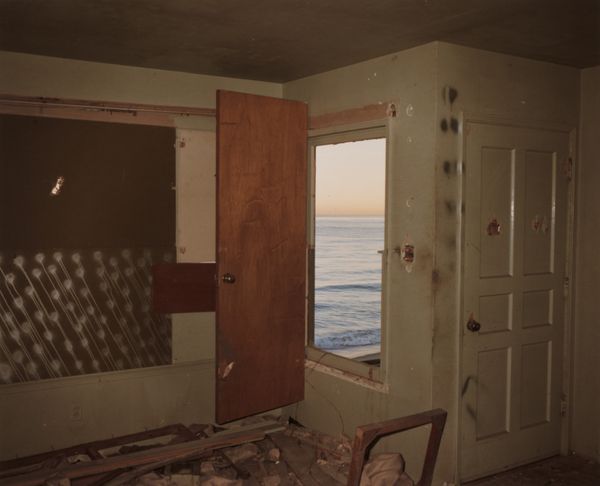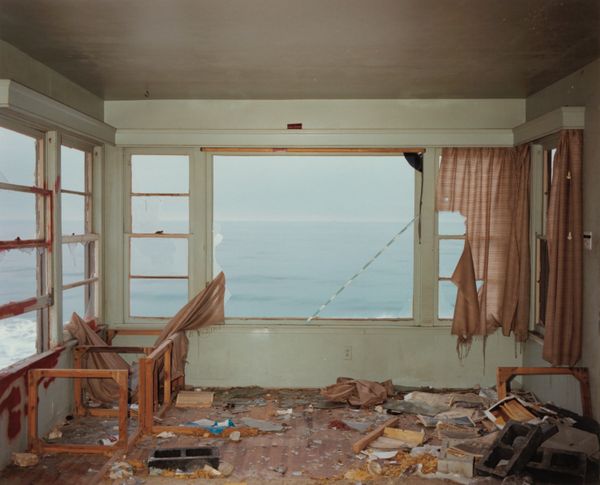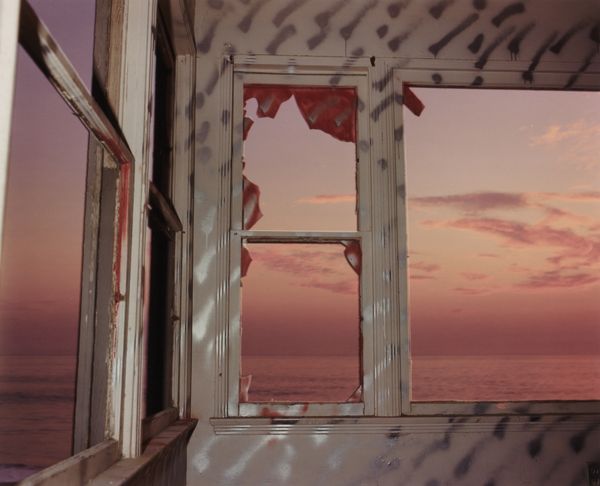
c-print, photography
#
contemporary
#
conceptual-art
#
postmodernism
#
appropriation
#
landscape
#
c-print
#
photography
Dimensions: image: 24.77 × 30.32 cm (9 3/4 × 11 15/16 in.) sheet: 27.9 × 35.5 cm (11 × 14 in.)
Copyright: National Gallery of Art: CC0 1.0
Curator: Standing here before John Divola's "Zuma #27," created in 1978, one is immediately struck by the interplay of devastation and serenity. It’s a C-print photograph, and that rich color enhances the scene, capturing what looks like a burned-out room facing the Pacific Ocean. What is your initial impression? Editor: A profound tension, definitely. It’s this harsh juxtaposition of inside versus outside, absence against presence. The violent decay of human habitation is eerily offset by the indifferent beauty of the natural world beyond. There's also something to be said about the context of conceptual art practice here, Divola is engaging in the act of appropriation as well. Curator: Exactly. The eye is drawn through the skeletal remains of the structure towards the vast ocean, the colors bleeding into each other—oranges and blues and greys of both the sunset and sea blending together on the horizon. It whispers to a cycle, maybe, destruction followed by, or even existing alongside beauty. Editor: And there is also a cycle of capitalist consumption and neglect, isn’t there? "Zuma #27," is from Divola’s larger project where he would break into abandoned houses, vandalize them, and then document the traces. Divola often used places ruined or in ruin as sets to create artificial dramas, hinting to questions surrounding class and privilege and to themes of property. I also think there’s an element of commentary on male identity, in crisis after second wave feminism…a crumbling foundation? Curator: I like that; there is certainly a quiet but deliberate hand at play here—an acknowledgement of human actions on display in an intimate format. I agree it prompts a critical inquiry regarding ownership, human interaction with, and ultimate abandonment of our environments. Editor: Divola isn’t just taking pictures; he’s intervening, marking the space, reclaiming it, leaving a trace. He offers a sharp critique about environmental exploitation and class disparity while playing on binaries; absence/presence, interior/exterior. Curator: There’s something to be said about the stillness of the composition as well. Zuma Beach carries so much glamour and notoriety in pop culture. Yet here it offers calm, it stands solid and constant amidst wreckage and ruin. It begs the question if such contrasts offer hope or if, maybe, it showcases deeper despair, to let go. Editor: Well, John Divola has definitely created an uncanny meditation, prompting dialogues that resonate beyond the physical print. He shows us how even in decay, the narrative continues—complex and contested as always.
Comments
No comments
Be the first to comment and join the conversation on the ultimate creative platform.
